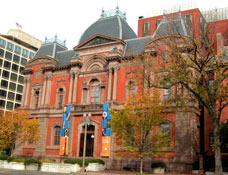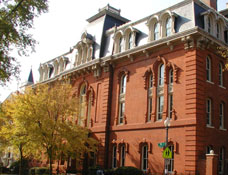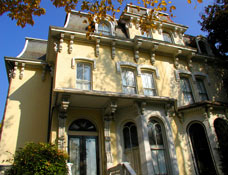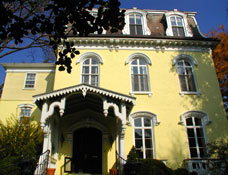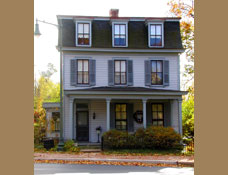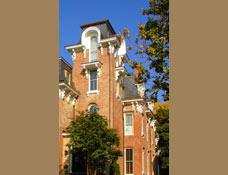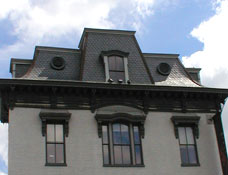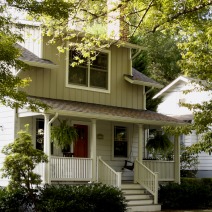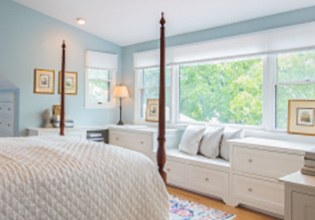As the name implies, Second Empire — also called French Second Empire, Napoleon III style, or mansard style — can be traced back to the reign of Napoleon III in France from 1852 to 1870. Under the emperor’s direction, much of Paris was rebuilt with wide avenues and striking monumental buildings, replacing medieval alleys and structures. The reconstruction of Paris in the Second Empire style significantly affected building design throughout Europe and the United States.
In public architecture, the mansard style exudes character and a sense of permanence. Residences designed in this style are generally large and built for the affluent homeowner. The look may be compared to a wedding cake at its most elaborate. During the peak of its popularity in the United States (roughly 1855 to 1885), the style was considered both fashionable and contemporary. Its popularity led to a widespread remodeling boom during which mansard roofs were incorporated into formerly pitched-roof residences.
The Second Empire style was most popular in affluent parts of the Northeast and Midwest, less common on the Pacific coast, and rare in the South. Predictably, the style’s popularity dropped rapidly following the economic depression of 1873. The free adaptation utilized in Second Empire mirrored the belief that, in America, one could pick and choose the best from the past. This philosophy drove a mix-and-match mentality.
One style constant is the mansard roof introduced by Francois Mansart, the 17th-century architect who used this roof style when enlarging the Louvre. Beneath their distinctive roofs, Second Empire homes have much in common with other Victorian-era styles. Similarities between Second Empire and Italianate are found in their stylistic use of overhanging eaves with decorative brackets and ornate door and window hoods.
Examples of the Second Empire Style
Two fine examples of Second Empire buildings are located directly across from each other, not far from the White House in Washington, DC. The Renwick Gallery, designed by architect James Renwick in 1859, resides at the northeast corner of 17th Street and Pennsylvania Avenue NW. It was the first significant U.S. building in the Second Empire style. A decade later, work began on the complex now known as the Old Executive Office Building. Designed by architect Alfred B. Mullet and notorious for its rich embellishment, the OEB is perhaps our nation’s grandest example of the Second Empire style.
Please view our portfolio to see Second Empire and other style homes the Wentworth team has remodeled in the Washington, DC, metro area.
Characteristics
As with other Victorian trends, Second Empire ornamentation is inspired and unstinting. Decorative details include iron cresting on the roof, heavily bracketed cornices, quoins, and balustrades. The general effect is monumental and ornate, appropriate to the style’s Napoleonic roots.
Second Empire residences often have a simple box form and are highly symmetrical. Some examples in Washington, DC, include Cooke’s Row on Q Street NW in Georgetown, the Visitation School on 35th Street NW, and the Folger’s offices on the 500 block of 8th Street SE. An asymmetrical form of Second Empire also exists. Usually laid out in an L shape, such homes can have two wings or be built as a single block with a strongly projecting bay that calls attention to an entrance where the wings meet.
Square or rectangular towers are also a common Second Empire feature. Today, such visually compelling towered houses are frequently featured in Halloween illustrations and horror films, such as Alfred Hitchcock’s Psycho and the Addams Family TV series.
Materials
Roofs are almost always slate shingles. Occasionally, the slate features a stylized, decorative pattern. The primary building materials are wood and brick. Brick buildings sometimes feature cut stone embellishments to make them more ornate. Because the style alludes to grandeur, buildings with clapboard often utilize wood quoins at the corners to make them appear more elaborate.
Roofs
Beyond its sheer visual strength, the advantage of a mansard roof is the added space it offers. Behind what appears to be a roof, there is room for a whole floor instead of a mere attic. A mansard roof can take many shapes: straight-angled, convex, concave, and even S-shaped curves are all possible, with or without dormers.
Windows
Main feature windows, often placed over an entrance, are most often arranged in pairs. Elaborate public buildings like the Renwick Museum have windows flanked by columns or pilasters. Wood clapboard homes are designed with elaborate window hoods supported by brackets and multiple layers of wood trim, often with incised patterns. Whimsical eyebrow shapes placed over windows, doors, and dormers are common. Brick Second Empire homes are simpler than wood because of the heightened expense associated with brick and stonework. Bay windows are often featured as an architectural element on a facade that accommodates an abundance of ornamentation.
Entrances
There is never a doubt where the entrance is located on a Second Empire home. A central projecting pavilion or elaborate canopy often highlights the entrance. The front porch is typically elevated above ground level by several steps, and the entryway may feature a double or extra-wide single door.
Learn more architecture terms to discover additional details about home construction design.
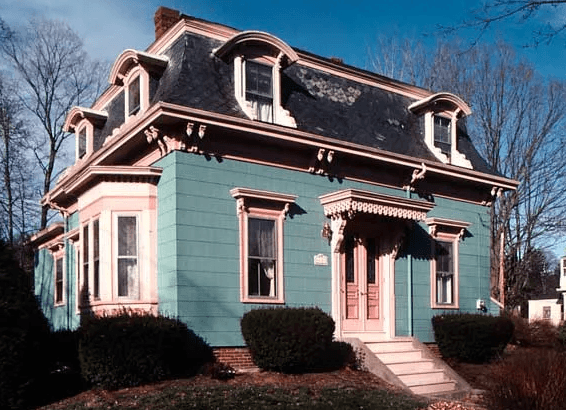
Second Empire Home Remodeling in VA, MD & DC
Are you the proud owner of a Second Empire home? If the property has fallen into disrepair over the years, restore its original luster with help from Wentworth. We have years of experience remodeling period homes in the DC metro area, and we would be pleased to handle your project with the utmost care. Here are the Second Empire home remodeling services we offer:
- Second Empire home remodeling: The Wentworth team can guide your project if you want to update a single room or entirely gut the interior.
- Second Empire home additions: Perhaps you adore the architectural style of your historic home, but you wish your family had more room to spread out. With a Second Empire home addition, you can add square footage while staying true to the original design.
- Second Empire interior reconfigurations: Illogical stair placement, wasted hallway space, and small kitchens deserve some attention. We can revitalize the interior by tearing down walls, repositioning plumbing fixtures, and much more.
- Custom Second Empire detailing: The ornate elements of this historic style can succumb to wear and tear over the years. We would be happy to replace damaged railings, trim, and flooring to make your home safer and more beautiful.
- Second Empire interior design services: It can be challenging to decorate a Victorian-era home with the modern furnishings available today. Wentworth’s designers can help you select period-appropriate pieces you love.
- Facade enhancements in the Second Empire style: From repairing damaged quoins to incorporating a Second Empire-inspired roof on your more modern building, our facade enhancements are sure to make you fall in love with your home all over again.
If you’re ready to begin your Second Empire home renovation project, please get in touch with Wentworth and request a consultation today!


